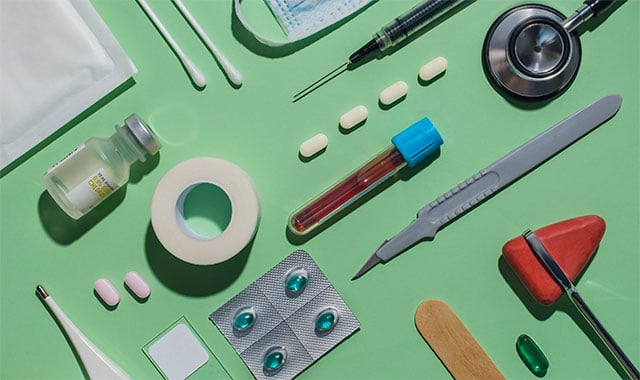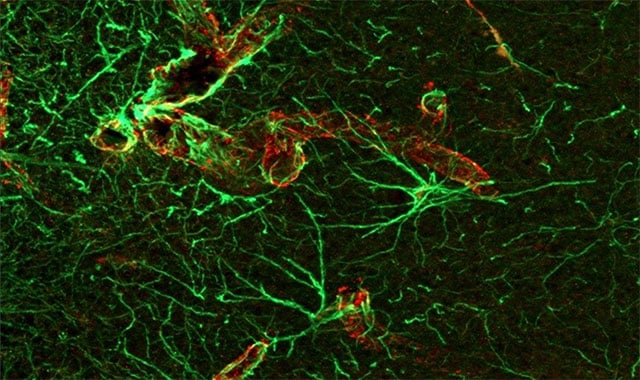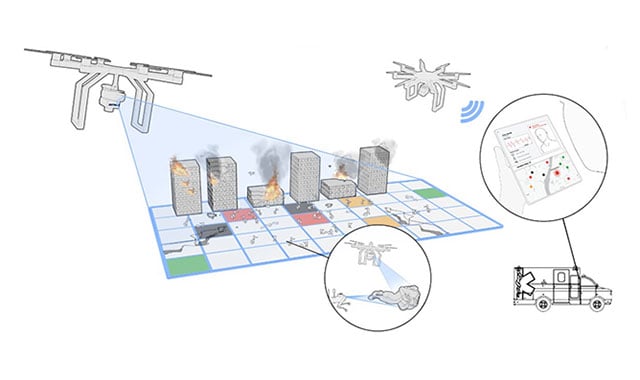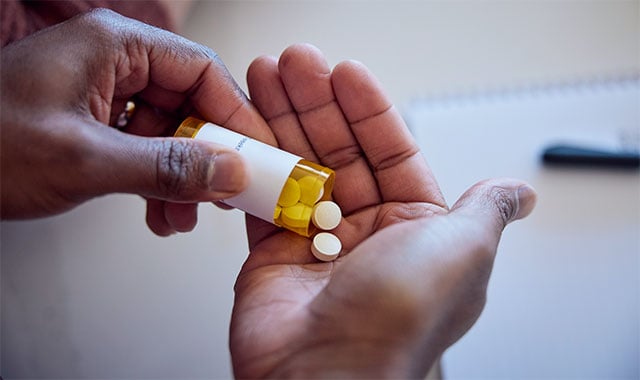The Algorithm Is In: 5 Ways AI is Transforming Medicine
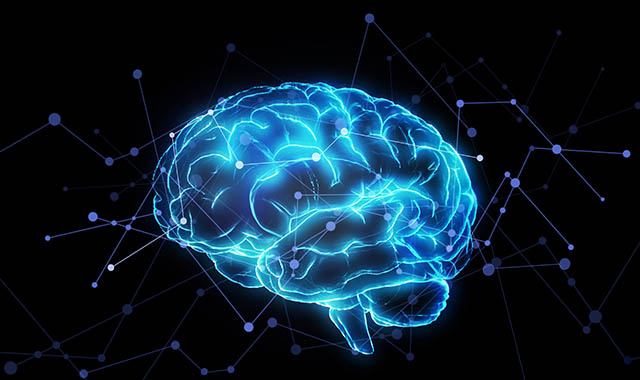
Are you ready to see Dr. Data?
Your doctor is not likely to be replaced by an algorithm anytime soon (or ever). But artificial intelligence (AI) and machine learning are already transforming medicine in amazing ways—and the era of AI-based healthcare applications is just beginning.
The growth of AI-based tools for medicine goes hand-in-hand with an explosion in medical data. Researchers and clinicians now have access to huge volumes of data from Electronic Healthcare Records (EHRs), sophisticated sensors and imaging tools, genomic analysis and a multitude of other sources. The volume of available data goes far beyond the ability of humans to process and utilize. However, sophisticated AI tools, including machine learning and predictive algorithms, can help people draw meaning from this deluge of data and see patterns that can be used to make better choices for patients.
Battelle is working to bring AI solutions to patients, providers and medical researchers. Our team brings together health researchers, biologists, medical device engineers and data scientists to solve critical challenges in diagnostics, predictive medicine, drug development, neurotechnology and more.
Here are five ways we see AI revolutionizing medicine today.
1. Diagnostics and Treatment Recommendations
Advances in medical imaging and other diagnostic tools give doctors a lot more data to work with in making a diagnosis. AI can detect patterns in diagnostic data that human doctors and medical technicians may miss and point doctors in the right direction for diagnosis.
For example, we can train an AI model to recognize signs of cancer in diagnostic images. Once trained, the AI can vastly speed up processing for diagnostic images, flagging images that may indicate cancer for expert human review or recommending additional testing. AI can increase the speed and accuracy of diagnosis and allow doctors and radiologists to focus their expertise on the cases where it is most needed.
AI tools can also be used to help doctors find patterns in patient data that may indicate a disease. EHRs may contain data from dozens of providers over a period of years, including lab test results, vital signs, medications and procedures, and notes from patient interviews. While it is hard for human doctors to synthesize large amounts of data from disparate sources, an AI tool that can read and interpret medical records could find these patterns and compare them to hundreds or thousands of similar patient profiles to suggest a potential diagnosis. This could be especially valuable for detection of rare diseases and conditions outside of a particular doctor's area of expertise.
An AI could also analyze large numbers of EHRs to predict which patients will benefit most from a particular treatment and which may have adverse reactions to a treatment option. We're not quite there yet—work remains to be done to make data from EHRs interoperable and accessible for this kind of analysis. But as we move into a more data-driven future, AIs could prove to be invaluable for diagnosis and treatment recommendations.
At Battelle, we are developing AI tools that can synthesize and interpret large volumes of data from disparate sources, including structured and unstructured data. For example, our Clinical Predictive Analytics suite uses AI to analyze patient health data and make recommendations for clinicians.
2. Monitoring and Predictive Medicine
Patients and providers now have access to a wide range of monitoring devices, from continuous glucose monitors and insulin pumps that allow patients to self-regulate diabetes at home to smart electrocardiograms that can send an alert to the nurses' station if a patient's heart rhythms become abnormal. Sophisticated wearable devices enable continuous remote monitoring for patients with chronic conditions, either at the hospital or from home.
Many of these devices are programmed to send an alert to the patient, caregiver or doctor when data fall outside of predetermined parameters. But AI will allow us to go much further. An AI health assistant could monitor data from multiple devices and look for patterns that indicate a problem is developing. An AI can even "learn" by combing through EHRs of similar patients to look for patterns that are correlated with different kinds of negative events. Predictive AIs could be used to determine which patients may be at risk for a cardiac event, stroke, respiratory failure, kidney failure or other medical emergency. This would allow an AI to predict which patients may be headed for trouble so that healthcare providers can take mitigating action before an adverse event occurs.
Battelle uses clinical predictive analytics to anticipate and mitigate risks for individual patients. One AI model was able to predict acute kidney failure 24 hours in advance of an occurrence, allowing physicians to take corrective action to keep patients safe.
3. Pathogen Detection and Identification
Genomic analysis is already widely used to detect and identify known pathogens. Traditional DNA analysis looks for genetic sequences that can be used as unique identifiers for different species of microbes. This makes it easy to confirm the identity of known pathogens such as E. coli or MRSA. However, it does not aid in the identification of previously unknown species that are not already in pathogen databases.
AI can help us go further by analyzing the genomes of unknown microbes and emerging pathogens and predicting their behavior. As part of the Fun GCAT program for the U.S. Intelligence Advanced Research Projects Activity (IARPA), Battelle has developed a database of threatening genetic sequences based on their protein function. Combining machine learning with human subject matter expertise, we have built an AI that can predict whether or not a novel species represents a threat to a variety of hosts, including humans. The AI can be used to analyze microbial genomes for pathogen severity, antibiotic resistance and infectiousness by looking at genetic sequences and the proteins they encode. Tools like Battelle UltraSEQ™ technology are already being used to rapidly screen microbial genomes and identify "genetic sequences of concern."
4. Drug Development
AI could accelerate development of traditional small molecule and biologic drugs. For example, AI could be used to analyze molecules and predict their potential function and behavior. AI-based virtual development tools may one day allow researchers to design candidate drugs in a virtual environment and select the most likely candidates for synthesis and testing. This may be especially valuable for biologic drugs, whose actions and effects can be difficult to predict. AI development tools could help researchers quickly screen out formulations likely to produce adverse effects and narrow down the candidates most likely to have the effects desired, speeding up development timelines and reducing the costs and risks of drug development.
Researchers at Battelle have applied AI tools to advanced materials research and development, to predict how materials will behave and interact under different scenarios. A similar approach could be used to solve drug development challenges.
5. Bioelectronic Medicine and Neurotechnology
Some of the most exciting applications for AI in medicine are in the fields of bioelectronic medicine and neurotechnology. These fields tap into the vast amounts of data produced by the human brain and nervous system—exactly the kind of problem AI is best at solving.
Using machine learning, we can train algorithms to make sense of neurological data. Our bodies use electrical signals to send information between different parts of the brain and between the brain and the spinal cord or peripheral nervous system. Interpreting these signals requires vast amounts of processing power to filter out the noise and assign meaning to the signals we find.
This was the approach Battelle used to develop Battelle NeuroLife®, a neural bridging technology that allows a paralyzed man to consciously control his wrist, hand and fingers. The system interprets signals from the brain and sends them to a special sleeve that stimulates different nerves and muscles to evoke specific movements, bypassing the damaged portion of his spinal cord. Researchers used machine learning to train the algorithm that reads the brain signals and sends instructions to the sleeve. The man was asked to consciously think about making specific movements with his hand over and over again until the AI algorithm "learned" which patterns of brain activity were correlated with each desired movement. Similar approaches could be applied to allow patients to control prosthetic devices, navigate physical environments in a wheelchair or interact with virtual environments using a computer cursor.
There are numerous other possibilities for bioelectronic medicine as well. Small electronic implants in the brain or spinal cord can be programmed to stimulate the brain or nervous system in specific ways. Deep brain stimulation (DBS) has demonstrated potential for treatment of a range of conditions, including essential tremor, depression, Parkinson's disease and dystonia. Stimulation in the spine or peripheral nervous system has shown promise for treatment of chronic pain and other conditions. AI can help us "close the loop" for these devices, monitoring vital signs or other key indicators in real time and providing feedback to modulate the device in response to specific triggers.
These examples are just the tip of the iceberg when it comes to the possibilities for AI in medicine. Over the next few years, we are likely to see an explosion in AI-based tools for medical applications. Battelle is excited to be part of the AI revolution in healthcare.
Related Blogs
BATTELLE UPDATES
Receive updates from Battelle for an all-access pass to the incredible work of Battelle researchers.
